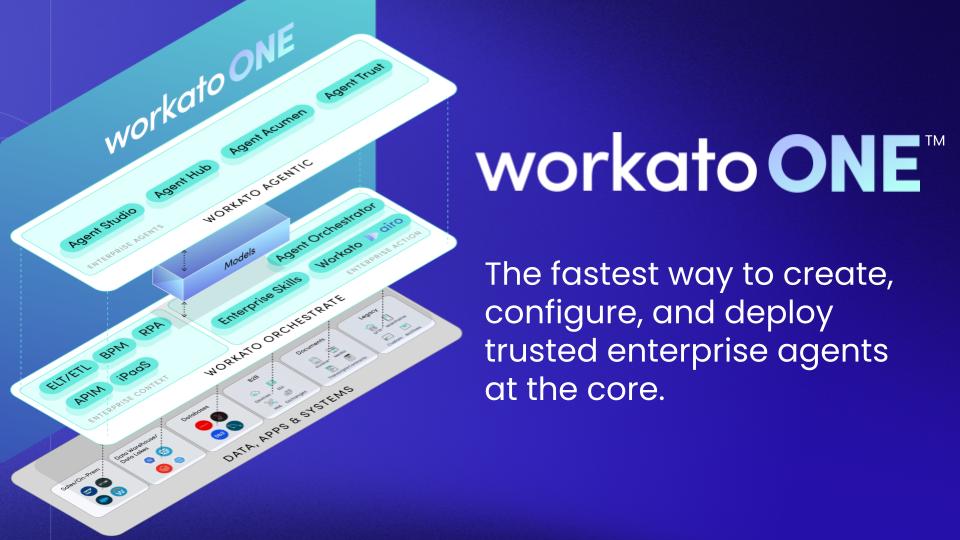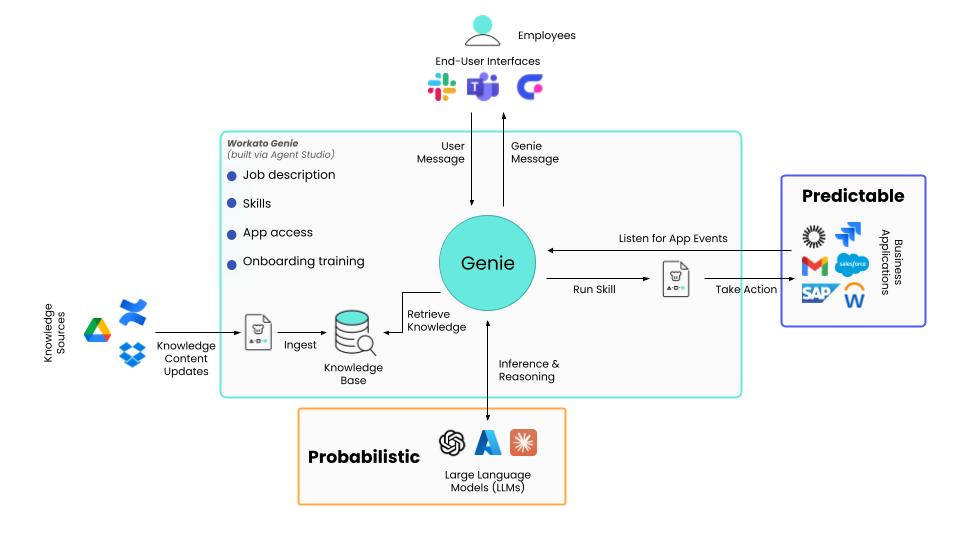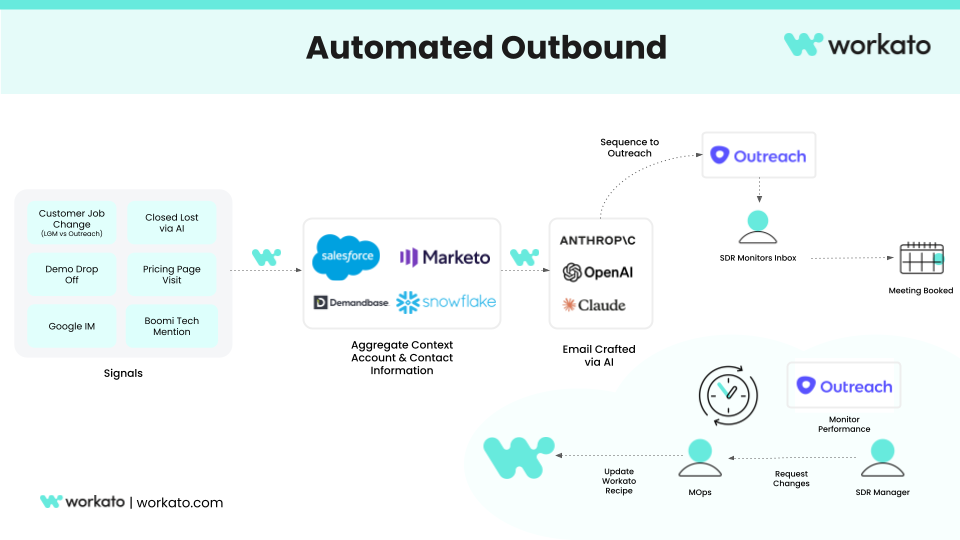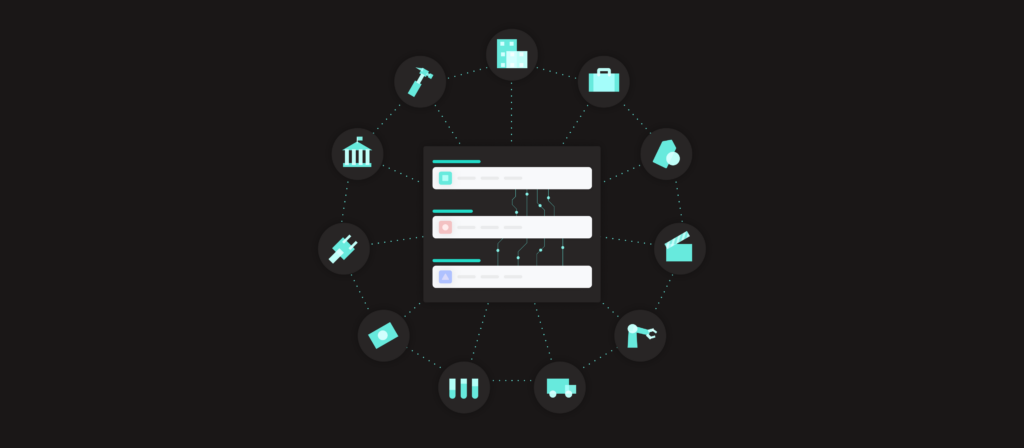The landscape of go-to-market (GTM) operations is undergoing a seismic shift. What began with simple chat-based bots is rapidly evolving into a world powered by intelligent, autonomous AI agents. This transformation challenges GTM teams to fundamentally rethink their strategies, demanding a move from mere automation to true autonomy.
At Workato, we’re not just observing this evolution; we’re actively leading it. Our recent webinar, “From Automation to Autonomy: Enhancing AI-Powered Automation with GTM Agents,” delved deep into how we’re evolving our own GTM strategy to stay ahead of this curve. This isn’t about adopting a single tool; it’s about building a future-proof GTM organization driven by an organization-wide appetite to work smarter, faster, and more independently. We’re embracing agent-centric workflows, continuous iteration, and a fail-fast mindset to create a more adaptive, autonomous GTM engine.
The AI Evolution: From Bots to Autonomous Agents

The journey of AI in GTM is a fascinating one. We’ve seen a clear progression:
- SaaS-Centric to AI-Centric: The traditional approach of finding a SaaS solution for every business problem is giving way to an AI-centric world. Large Language Models (LLMs) are enabling companies to solve broader and more complex business problems—especially those that require human reasoning and adaptability. Unlike traditional SaaS, which primarily automated data movement and routine, system-level tasks, AI allows teams to build purpose built solutions from the ground up, tailored to dynamic and variable use cases.
- Speed and Efficiency: The bar for growth has been dramatically raised. Companies like Cursor and Midjourney have achieved remarkable milestones, reaching $100 million ARR in record time with incredibly lean teams. This highlights the power of AI to unlock unprecedented organizational efficiency and accelerated speed.
- Top-Down Directives: Leaders are facing increasing pressure to adopt AI to “do more with what we have and achieve better results.” This isn’t just a trend; it’s a competitive imperative.
The winners in this new race will be those who can unlock organization-wide efficiency with accelerated speed and adapt quickly to the continuous changes in AI technology. This means moving beyond rigid processes to become adaptive by design.
Workato’s Agentic Frameworks in Action
At Workato, our internal teams are at the forefront of this transformation. With over 3,000 active “recipes” (our term for automated workflows) running our business, we’re not discarding our successful automation infrastructure. Instead, we’re building AI agents directly on top of it, leveraging our robust integration and orchestration layers.

This is where the concept of a “genie” comes into play.. Think of a Workato genie as an AI-powered digital teammate, trained to work like a member of your team. Building a genie mirrors the process of hiring:
- Job Description (Instructions): Define the genie’s high-level role and responsibilities, much like a job description.
- Skills: Equip the genie with the abilities it needs to execute tasks, drawing from Workato’s familiar recipe-building experience.
App Events: Enable the genie to monitor and respond to system activity by setting up triggers across applications.Knowledge Bases: Provide business-specific context so the genie can make informed decisions with relevant information. These four elements empower genies to understand business context, take action across applications, and operate autonomously, all while maintaining the enterprise-grade security and compliance Workato customers expect.
A Real-World Example: Optimizing Outbound Campaigns

One powerful internal example is our evolution of automated outbound prospecting. Initially, we amplified outbound efforts by taking first and third-party signals (like website visits, job changes, or competitor research), aggregating data from various sources (Salesforce, Marketo, Demandbase, Snowflake), and feeding it into a prompt to automatically generate and send personalized emails on behalf of our SDRs .
While this saved significant time and boosted SDR productivity by allowing them to focus on higher quality leads, monitoring performance and optimizing the messaging still required manual intervention from marketing operations. This often resulted in a bi-weekly cadence for monitoring, evaluation, and implementation of changes.
This is precisely where “Mike”comes in. Mike, our Marketing Insights and Key Engagement Strategist genie, is specifically tasked with outbound campaign performance optimization. Mike’s job description includes key metrics to track (email open rates, reply rates, meetings booked) and ability to interact with relevant data sources such as CRM systems, product usage data, customer support transcripts, or sales activity logs—enabling a more holistic and real time optimization of campaign performance. This allows Mike to continuously monitor campaign performance, identify areas for improvement, and even suggest adjustments to prompts or assets autonomously, dramatically accelerating the optimization cycle.
Cultivating a Culture of Experimentation
The shift to autonomous agents isn’t just about technology; it’s about fostering a culture of experimentation and adaptive execution. This requires close collaboration between business technology teams focusing on architecture, security, and efficiency and marketing operations teams understanding business needs and current processes.
By combining these perspectives, organizations can:
- Identify areas of high impact: Focus AI and agentic efforts where existing automations have already proven effective.
- Scale further: Use AI to amplify successful processes across the business
- Minimize tech debt: Build and scale architecture efficiently, optimizing resource usage and minimizing costs associated with AI platforms (not to mention existing SaaS sprawl).
- Iterate rapidly: Embrace a “fail-fast” mindset, allowing for quick adjustments and improvements based on performance data.
This approach ensures that AI adoption is not just a top-down directive but a strategic, collaborative effort that drives tangible results, uplifts employees, and positions the organization for future growth.
The Future is Autonomous
The journey from automation to autonomy is ongoing, but the path is clear. By embracing AI-powered agents, organizations can unlock unprecedented levels of efficiency, adapt to market changes with remarkable speed, and ultimately build a more resilient and future-proof GTM engine. This is more than just a technological upgrade; it’s a fundamental shift in how we work, enabling teams to achieve more with what they have and consistently deliver superior results.
Are you ready to transform your GTM operations and embrace the power of autonomous AI agents? The future of work is here, and it’s more intelligent, adaptive, and autonomous than ever before.
